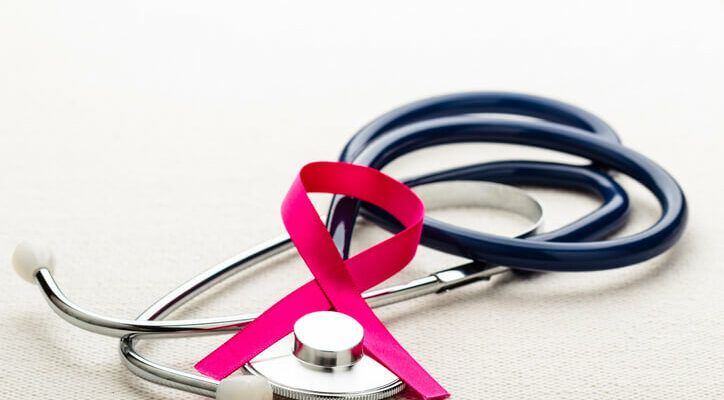October is Breast Cancer Awareness Month, and a great time to educate and review the many prevention strategies available. I’m still surprised today that many women come to see me who have never been given information about a comprehensive preventative plan for breast cancer. About 1 in 8 U.S. women (about 12 percent) will develop invasive breast cancer over the course of her lifetime. It’s a heart-breaking diagnosis to witness and almost every one of us loves or knows a victim of it. Thankfully, there are many steps you can take to better breast health and lower cancer rates.
In addition to having a mammogram, thermogram and doing a regular self-check, I encourage all women to learn how the role of food, digestion, and avoidance of toxins can help you significantly lower your risks.
Here are my top “additional” recommendations:
Limit sugar and alcohol: I recommend that my female patients stick to 6 teaspoons of sugar per day, and no more than three servings of alcohol per week (that’s one glass of wine per serving).
Processed sugars are empty calories and just bad all around—they spike your blood sugar and are void of any valuable nutrients. Besides causing weight gain, sugar triggers the release of inflammatory messengers called cytokines and can cause suppression of white blood cells, which makes you more susceptible to getting sick, and inflammation caused by sugar has also been linked to an increased risk in cancer.
Alcohol is converted to sugar and sugar is one of the leading triggers of inflammation, and has been linked to an increase in breast cancer. It also places a burden on your liver and impairs detoxification, a key function in cancer prevention. Don’t use alcohol for unwinding after a long day, or as a sedative—it doesn’t work. Instead, do some yoga moves, write in a journal, or meditate and if those do not work, try adding in a low-dose magnesium complex supplement to help.
A final word about sugar. . . I hear so many female patients say they have a “sweet tooth.” There’s a reason for that and the sweet tooth is propelled by candida overgrowth—or the overgrowth of yeast in the body that is fed by sugar (which is why your body craves sugar). Doing a candida cleanse is the best thing someone can do who has constant sugar cravings!
Watch your toxic load:
It’s certainly true that we are exposed to toxins that can increase cancer risk, but I personally believe it is impossible to avoid all pollutants in our environment. What you can do is manage your toxic load, by choosing organic produce, hormone-free meats and decreasing your exposure to those that wreak havoc on hormones: parabens, pthalates and organophosphates (especially in your lotion, sunscreen and make-up). For more information, take a survey I created, “Managing Your Toxic Load.” Do your best and don’t obsess.
Keep Your Liver Healthy: Your liver is the key way that your body detoxifies, and removes toxins and waste from your body. In addition to limiting sugar and alcohol, and your toxic load, you can help keep this essential filter clean and functioning optimally by maintaining a healthy weight, avoiding processed foods and refined carbs, and by using a liver detoxing juice.
De-Stress
Extreme or chronic stress may activate cancer. There are many women that are newly diagnosed after a divorce or a loss. We know the science behind stress; the cortisol swings affect insulin which then triggers inflammation. It is difficult to lead a stress-free life, but having good habits to manage stress can help mitigate the damages. Everyone should have a daily stress reduction plan, even if it is just 15-minutes per day. Exercise, meditation, prayer and connection are all common ways of routinely managing stress. Additionally, scheduling at least a few hours per week of recovery from stress can help to keep stress hormones balanced. Try acupuncture, yoga, massage or tai chi as weekly stress solutions.
Be Regular: A daily bowel movement can keep on your journey to keeping breast cancer at bay. During constipation, bile acids are absorbed in your intestines and can concentrate in breast tissue, which can affect estrogen levels and increase your risk for tumors. If you aren’t regular, consider taking a daily digestive enzyme and a probiotic.
Check for Balance
You should definitely check to see that the following hormones are in balance. Your liver function and inflammatory markers can also show signs of risk. These are my recommendations (conventional medical standards often recommend less frequent screenings). You should have had your baseline mammogram at age 40, and every year thereafter. I’m also am in favor of thermography and use it in my Centre! Thermography typically takes 10-15-minutes and is completely non-invasive. Images of the breast are taken with thermographic cameras and can detect where there might be inflammation and areas of concern. Getting a baseline image done and then following up with regular annual thermograms can be a very prudent way of early detection—especially for those who are under 40 and not receiving regular mammography yet.
In addition, request the following labs at your yearly physical to check your levels.
Hormone Levels
- Thyroid-stimulating hormone (TSH): 1-2 U/ml
- Free triiodothyronine (free T3): 3-5 ng/do
- Estradiol: 50-150 pg/ml
- Progesterone: 5-2.0 ng/ml
- Estrone: <150 ng/do
- DHEA: 100–200 ng/ml
- C-peptide: 1–3 ng/ml
- Leptin: 5–15 umol/l
Track inflammation Markers:
- Homocysteine: <10 umol/l
- C-reactive protein (CRP): 1–2 mg/hr
- Erythrocyte sedimentation rate (ESR): <10 mm/hr
Check Liver Function:
- Aspartate aminotransferase (AST): <40 u/l
- Alanine aminotransferase (ALT): <40 u/l
(You can find more information on all of the above in my book, Super Woman Rx!)


